Art never ceases to amaze people. The new addition to the list of amazing art forms from Bharatkhand that revolves around human spirituality, and symbolism is Tibetan thangka painting.
The sacred example of Buddhist art, thangka painting, flourished in the regions or countries around the Himalayas. Its spread has been witnessed all over Nepal, Sikkim and Tibet. It’s an art form that is saturated with intricate meanings and metaphors that help people connect with the elements of the pictures or the pictures as a whole. It’s believed that the pictures are a mode to bind the meditators with spiritualism.
It’s an undeniable fact that Thangka paintings stand out as captivating embodiments of Buddhist spirituality. They are more than just visual masterpieces; they serve as portals to deeper realms of consciousness and spiritual insight.
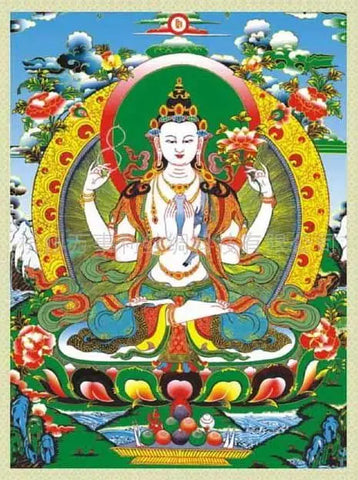
History of Thangka Paintings
The history of Thangka paintings is as intricate and spellbinding as the artworks themselves. Originating in the Himalayan regions, particularly Tibet, Nepal, Bhutan, and northern India, Thangka paintings have been integral to the practice of Vajrayana Buddhism for centuries. This Tibetan Buddhist art form has always found its place in people’s homes as decor items for their transfixing beauty. But these paintings are for the greater good. They are portals to take meditators to a realm of peace, sanctity, positive aura and spirituality, away from the hustle-bustle of life.
It’s believed that the first Buddhist painting that played a role in the emergence of this art form was Thupa Chu Lenma. When a Tibetan artist breathed life into a picture of the Buddha by simply seeing his reflection on a water body, the birth of Tibetan Buddhist art was possible. Another popular story related to the birth of Buddhist thangka paintings depicts an artist’s ability to draw Lord Buddha from the rays emitted by him as per the request of the princess of Sinhala. Amazing, no? The story that plays a role in the creation of the thangka painting is sure to be mesmerising like no other story.
Rooted in ancient Indian Buddhist art, Thangka painting flourished under the patronage of Tibetan Buddhist monasteries and royal courts. The earliest Thangkas date back to the 7th century, with influences from Indian, Chinese, and Central Asian arts or paintings. Over time, Thangka painting evolved into a highly specialised and revered form of religious art, with skilled artisans crafting each piece to be the epitome of divine iconography and symbolism.
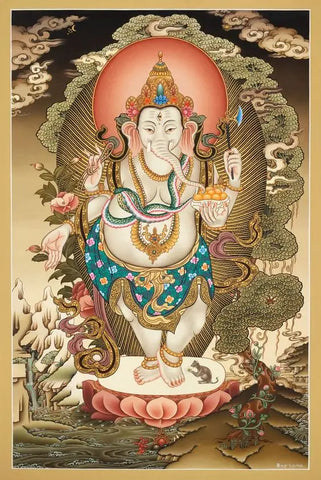
Motifs of Thangka Paintings
Thangka paintings are rich in constituents that refer to Buddhism. Every component in Buddhist painting plays a role in turning the painting into a medium to enlighten the muse and convey profound spiritual lessons. Rich in colours, even the hues or their shades reveal connotations that help in meditation and assist in turning the image into tokens to wish one long life or shower blessings to help recover one from ailments.
At the heart of Thangka art lies the depiction of Buddhas, Bodhisattvas, and other enlightened beings, each imbued with symbolic attributes and gestures that convey their transcendent qualities.
Common motifs in Thangka paintings include the Buddha Shakyamuni, the compassionate Avalokiteshvara, the wisdom-bestowing Manjushri, and the fierce protector deity Mahakala. But that’s not it! Apart from these powerful deities, Buddhist Thangka paintings also include symbols or elements such as lotus, the Dharma wheel, the vase, pairs of golden fish, the white conch shell, the eternal knot, elephants, circles, mandalas, mountains, trees, rivers, squares, and the white parasol.
The colour symbolism is pretty strong in thangka paintings. Every colour present in the painting is chosen after great consideration and to not only make the image visually attractive but also according to the iconographic guidelines. The popular colours in Tibetan Buddhist art are green (denotes harmony, balance), red (denotes energy, passion), yellow (denotes abstention from, deep-rooted), blue (denotes layers of spirituality, tranquillity), and white (denotes truth, purity). Pictures drawn using these colours become the route for the practitioners to complete their spiritual journey or goals.
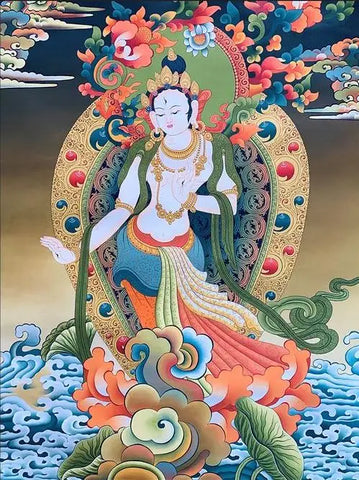
Material Used in Thangka Paintings
The creation of Thangka paintings is truly not the work of a novice. Only a person/people with great knowledge of Buddhist painting or who has been on a journey of spiritualism and portrays skills like patience, and reverence for tradition can help flourish the art. Traditionally, Thangkas are painted on cotton or silk canvas using natural mineral pigments and precious metals such as gold and silver. Being a painting that is designed to turn into an object that evokes spiritual presence, just being a great artist is not enough. The real artists who have been involved with Tibetan thangka painting for decades perform long spiritual rituals to make the paintings heavy with spiritual energy. The use of all-natural tools also plays a role in the artist’s efforts to turn the painting into one that’s pervaded by a sense of spirituality.
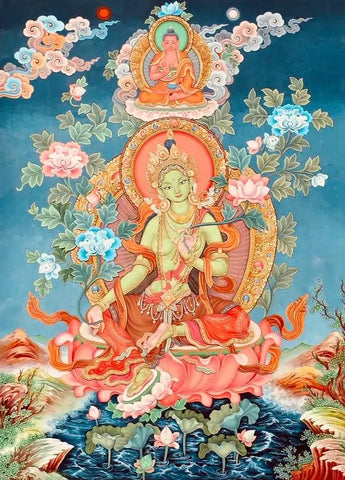
Significance of Sikkim Thangka Paintings
Sikkim, nestled in the eastern Himalayas, has taken Thangka painting to a stage where the regular elements of paintings have turned from mundane to extraordinary. Home to numerous monasteries and Buddhist communities, Sikkim has preserved and nurtured the art of Thangka painting for generations. The complex details, vibrant colours, and spiritual depth of Tibetan Buddhist art make them fit to be a part of monasteries, shrine rooms, and ceremonial processions, serving as visual aids for practitioners on the path to enlightenment.
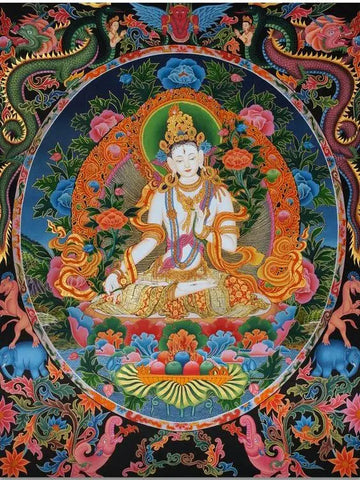
As we’re about to close the discussion on Thangka paintings, it’s evident that this Tibetan Buddhist art represents a harmonious fusion of craft and spirituality. The pictures are a means to uplift the human spirit. As repositories of ancient wisdom and religious devotion, Thangka paintings are humanity's quest for meaning and enlightenment.
Identifying the significance of Buddhist Thangka painting, iTokri has taken a pledge to preserve the legacy of this Indian craft for future generations. We have a vast collection of handmade products that feature artwork inspired by Tibetan Buddhist art and are sure to turn your home/office into a sacred nest where peace and harmony reign supreme.
 Verified Purchase
Verified Purchase
























Leave a comment (all fields required)